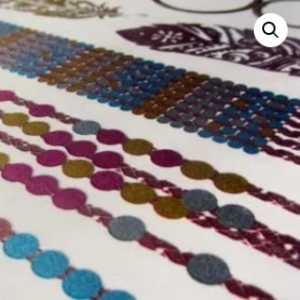3D lenticular printing is a creative and captivating method in print technology, where innovation is a continual driving force. This unique technique can convert two-dimensional photos into three-dimensional works of art, giving printed images a whole new dimension. This essay will explore 3D lenticular printing and examine its history, science, and many uses.
How did 3D Lenticular Printing Began?
Sir David Brewster, a Scottish scientist, first observed the fascinating visual effects generated when a flat sheet of lenses was laid over a carefully created picture in the 17th century, giving rise to lenticular imaging. However, lenticular printing as we know it now did not take form until the middle of the 20th century.
In the 1950s, lenticular printing became extensively employed in postcards and novelty products, which led to its widespread appeal. The method was founded on the idea of carefully interlacing two or more pictures and aligning them with a lenticular lens, a sheet of plastic containing rows of small convex lenses, to provide the appearance of depth and motion. These lenses effectively simulate the third dimension by allowing distinct sets of pictures to be viewed from various perspectives.
Understanding 3D Lenticular Printing's Science
Stereoscopy is the idea behind 3D lenticular printing, which refers to the brain's capacity to recognise depth and dimension from slightly distinct pictures seen by each eye. The first step in the procedure is the generation of a "lenticular image." This picture often comprises two or more frames—interlaced image layers. To provide the required 3D illusion, these frames are precisely positioned and aligned by the unique properties of the lenticular lens.
The number of frames utilized, the resolution of the source pictures, the lens design, and the printing method all impact the lenticular print's accuracy and quality. The smoother the transition between images and the more realistic the 3D appearance, the more frames are employed. High-resolution source photos are essential for a crisp and detailed lenticular print since the lenses might accentuate any flaws.
Multiple Uses for 3D Lenticular Printing
The potential of 3D Lenticular Printing to turn still photos into lively, attention-grabbing displays has resulted in various applications across several sectors. Here are some noteworthy examples:
- Marketing and advertising
To draw viewers in and make marketing materials more attractive, 3D lenticular prints are utilized in advertising. The aesthetic attractiveness of lenticular printing may be used to enhance billboards, posters, and product packaging.
- Training and Education
Lenticular prints are used to provide interactive learning materials in education. This technology may be used in textbooks, flashcards, and instructional displays to help students grasp and remember subjects better.
- Entertainment
Lenticular printing has gained popularity in the entertainment sector for use on movie posters, DVD covers, and advertising materials. These prints generate a feeling of eagerness and excitement by displaying characters or settings in three dimensions.
- Invitations and greeting cards
Thanks to lenticular technology, the world of greeting cards and invitations has gained a new dimension. With some 3D magic, personalized words and artwork can come to life.
- Merchandise Packaging
Interactivity is added to product packaging through lenticular printing. Businesses utilize it to promote their goods distinctively, letting customers examine features and particulars by tilting the box.
- Photography and the arts
To give their images a feeling of depth and reality, several photographers and artists have started using 3D lenticular printing. The immersive experience it provides is beyond anything conventional art or photography can match.
- Science-based Illustration:
Lenticular prints may be used in scientific research and education to convey complicated facts more precisely and excitingly. Researchers and students may better understand complex ideas because of these prints.
A remarkable example of the fusion of art, science, and technology is 3D Lenticular Printing. It is a valuable tool in many sectors because of its capacity to generate beautiful 3D effects and bring pictures to life. With the further development of technology, new avenues for expression and connection will become available, providing a fantastic visual experience. 3D lenticular printing can completely change how we see and interact with pictures, whether in advertising, education, or the arts. This is a fascinating adventure that has just begun.


